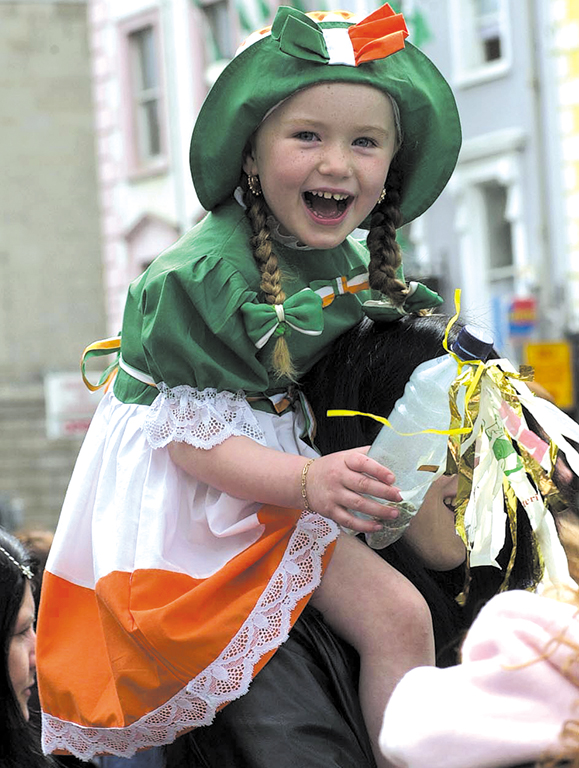The sign in the display in Clery’s shop window on Dublin’s O’Connell Street said it all: “Strong, bold…and proud to be Irish.” The sentiment perfectly captured the spirit of the city’s belated St. Patrick’s Day festival this past May.
St. Patrick’s Day celebrations throughout the country were canceled in March due to an outbreak of foot-and-mouth disease that paralyzed Britain and Ireland, and the belated festival took on an added level of meaning as the Irish celebrated not only their heritage, but the end of a springtime of fear and isolation that the threat of the disease had imposed.
The revelries kicked off on Friday, May 18, with a torch-lit procession led by high school students. Starting at four different points throughout the city, the students walked down to the river Liffey. As they proceeded along the quays to the central meeting point where President McAleese waited to greet them, wooden effigies in the shapes of different animals that were floating on barges in the river erupted in flames.
Saturday’s festivities included a street festival with jugglers, acrobats, live music by a variety of bands and face painting, followed that evening by the Afoxe (pronounced Afoshe) Night Time Carnival, a street performance of Brazilian dance and drumming that proceeded down O’Connell Street to the General Post Office.
Afterwards, spectators had to hotfoot it down to the Liffey to find a vantage point among the thousands of spectators waiting for Skyfest, a fireworks spectacular choreographed by Sid Howard who was responsible for the fantastic pyrotechnics that closed the Sydney Olympics. One effect that had onlookers oohing was a rippling rainbow that coursed up and down the quays by the International Financial Centre.
Sunday afternoon featured the parade itself. Taking “Fusion” as its theme, the parade featured brilliant costumes drawn from cultures throughout the world along with pageants, floats and marching bands from across the country.
The absence of American marching bands that usually participate in the parade but who were unable to fly over for the postponed dates seriously depleted the parade’s size, but did nothing to diminish the enthusiasm.
Publicists for the festival simply spun it as the first “purely Irish” St. Patrick’s Day parade.
Some Dublin residents complained that they never knew what the rescheduled dates were until they heard a radio announcement on the first day of the festival. Still, an estimated 1.2 million people managed to attend the festivities.
All throughout Dublin’s city center that weekend, the feelings of confidence and optimism that increasingly have come to characterize Ireland were palpable. New luxury hotels, excellent restaurants and the accelerated pace of development that keeps cranes dotting the skyline indicate that Dublin can hold its own against any European city. And the presence of Africans, Eastern Europeans, East Indians and other ethnicities participating in all aspects of life, from working in Bewley’s Tea Shop to marching in the parade, signify that it is also rapidly becoming a truly international city.
So if you’re looking for a great St. Patrick’s Day parade, book your flight to Dublin for next year. If this year’s event was anything to go by you’re bound to have a fantastic time. ♦


Leave a Reply